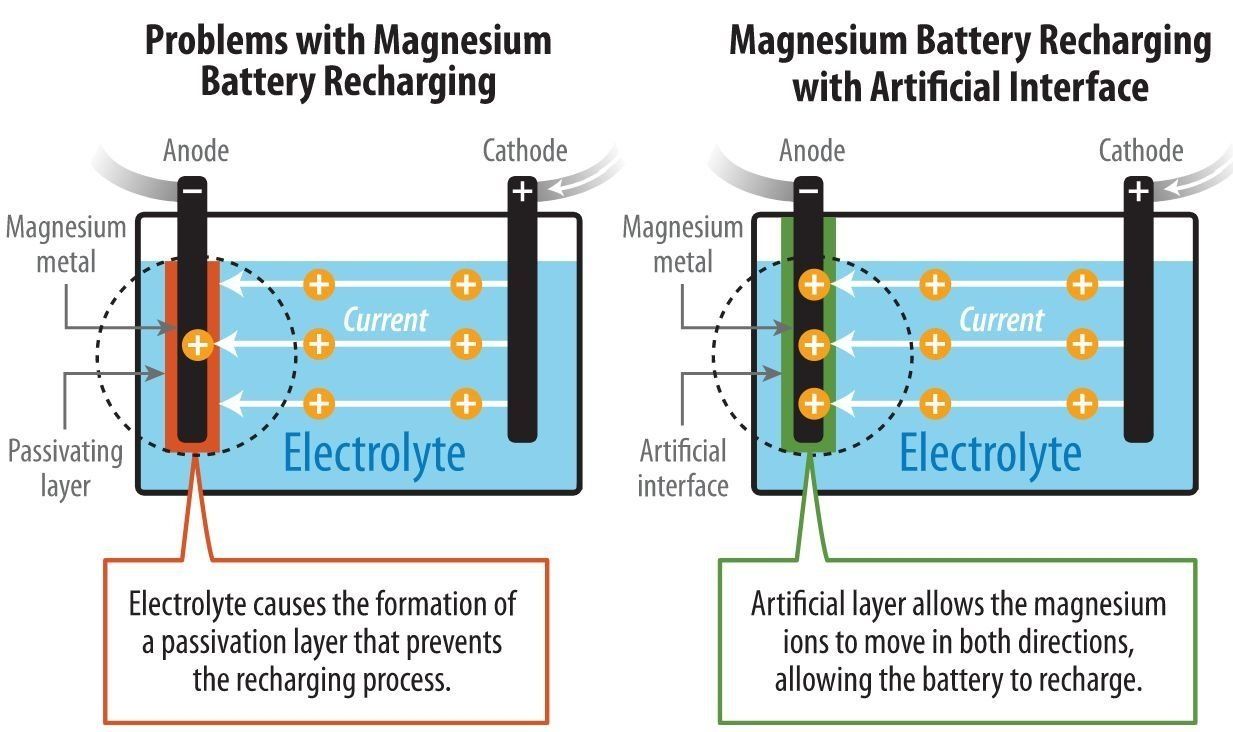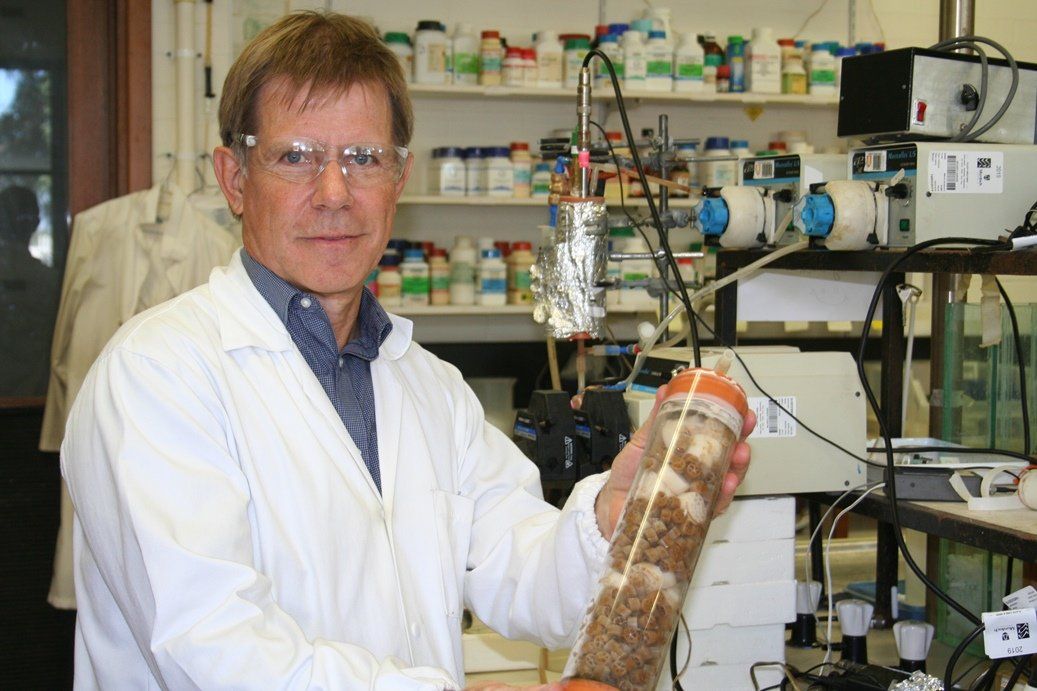Researchers have made a potentially vital breakthrough in the search for renewable energy storage.



Researchers at the University of Notre Dame are developing a renewable energy approach for synthesizing ammonia, an essential component of fertilizers that support the world’s food production needs. The Haber-Bosch process developed in the early 1900s for producing ammonia relies on non-renewable fossil fuels and has limited applications for only large, centralized chemical plants.
The new process, published in Nature Catalysis, utilizes a plasma—an ionized gas—in combination with non-noble metal catalysts to generate ammonia at much milder conditions than is possible with Haber-Bosch. The energy in the plasma excites nitrogen molecules, one of the two components that go into making ammonia, allowing them to react more readily on the catalysts. Because the energy for the reaction comes from the plasma rather than high heat and intense pressure, the process can be carried out at small scale. This makes the new process well-suited for use with intermittent renewable energy sources and for distributed ammonia production.
“Plasmas have been considered by many as a way to make ammonia that is not dependent on fossil fuels and had the potential to be applied in a less centralized way,” said William Schneider, H. Clifford and Evelyn A. Brosey Professor of Engineering, affiliated member of ND Energy and co-author of the study. “The real challenge has been to find the right combination of plasma and catalyst. By combining molecular models with results in the laboratory, we were able to focus in on combinations that had never been considered before.”
Mitsubishi Hitachi Power Systems (MHPS) and Carnegie Mellon University (CMU) today announced the release of the 2018 Carnegie Mellon Power Sector Carbon Index, at CMU Energy Week, hosted by the Wilton E. Scott Institute for Energy Innovation. The Index tracks the environmental performance of U.S. power producers and compares current emissions to more than two decades of historical data collected nationwide. This release marks the one-year anniversary of the Index, developed as a new metric to track power sector carbon emissions performance trends.
“The Carnegie Mellon Power Sector Carbon Index provides a snapshot of critical data regarding energy production and environmental performance,” said Costa Samaras, Assistant Professor of Civil and Environmental Engineering. “We’ve found this index to provide significant insight into trends in power generation and emissions. In particular, the data have shown that emissions intensity has fallen to the lowest level on record, as a combination of natural gas and renewable power have displaced more carbon intensive coal-fired power generation.”
The latest data revealed the following findings: U.S. power plant emissions averaged 967 lb. CO2 per megawatt hour (MWh) in 2017, which was down 3.1 percent from the prior year and down 26.8 percent from the annual value of 1,321 lb CO2 per MWh in 2005 The result of 2016 was initially reported as 1,001 lb/MWh, but was later revised downward to 998 lb/MWh.

YES!!!
Scientists at the Department of Energy’s National Renewable Energy Laboratory (NREL) have discovered a new approach for developing a rechargeable non-aqueous magnesium-metal battery.
A proof-of-concept paper published in Nature Chemistry detailed how the scientists pioneered a method to enable the reversible chemistry of magnesium metal in the noncorrosive carbonate-based electrolytes and tested the concept in a prototype cell. The technology possesses potential advantages over lithium-ion batteries—notably, higher energy density, greater stability, and lower cost.
NREL researchers (from left) Seoung-Bum Son, Steve Harvey, Andrew Norman and Chunmei Ban are co-authors of the Nature Chemistry white paper, “An Artificial Interphase Enables Reversible Magnesium Chemistry in Carbonate Electrolytes” working with a Time-of-flight secondary ion mass spectrometry. The device allows them to investigate material degradation and failure mechanisms at the micro- to nano-scale. (Photo by Dennis Schroeder / NREL)


A new energy-efficient process developed at Murdoch University is set to revolutionise wastewater treatment by significantly reducing the industry’s electricity consumption.
Dr. Ralf Cord-Ruwisch and Dr. Wipa Charles, along with two Phd students have collaborated with engineers Professor Liang Cheng and Dr. Lee Walker to form BioFilmTec Pty. Ltd – a research team designing and developing a new wastewater treatment system that requires less than half the electricity to operate.
With current wastewater treatment technology in Australia more than 100 years old, Dr. Cord-Ruwisch believes the time is right for a more energy-efficient approach.

Imagine waking up tomorrow in a world that doesn’t depend on oil.
That might seem far-fetched, but as engineers and scientists come up with new ways to harness renewable energy, those new sources of energy may soon shape the way our societies function and how we live our daily lives.
“We’re going to stop depending on oil long before we run out of it, so we really need to exercise our imaginations about what other futures are possible,” explains University of Alberta associate professor Sheena Wilson, who heads the Future Energy Systems energy humanities theme.

Researchers have developed a straightforward way to make a type of conducting polymers with high surface area—called “nanoflowers”—potentially useful for energy transfer and storage.
If you could brush your cheek against a nanoflower’s microscopic petals, you’d find them cool, hard, and… rusty. Common rust forms the inner skeleton of these lovely and intricate nanostructures, while their outer layer is a kind of plastic.
“Rust will always pose a challenge in Earth’s humid and oxygenated atmosphere,” says Julio M. D’Arcy, assistant professor of chemistry at Washington University in St. Louis and a member of the Institute of Materials Science and Engineering. “Corrosion makes structures fragile and decreases the ability of components to function properly. But in our lab, we’ve learned how to control the growth of rust so that it can serve an important purpose.”

This special report will look at the energy transition from the perspective of America, the EU and China as well as petrostates such as Russia and Saudi Arabia. It will pinpoint winners and losers. It will argue that America is at risk of squandering an early lead, obtained by using natural gas and renewables to slash emissions, promoting clean technology and helping pioneer the Paris agreement. China is catching up fast. Saudi Arabia and Russia are in most obvious peril.
TO ENTER TAFT, two hours north of Los Angeles, you drive along the “Petroleum Highway”, past miles of billboards advertising Jesus. God’s country is also oil country. Spread over the sagebrush hills surrounding the town are thousands of steel pumpjacks (pictured), contraptions that suck oil out of the ground. They look like a herd of dinosaurs. Some Californians would describe the oil industry in the same way.
The oil produced at Taft is not produced by hydraulic fracturing, or fracking, as much of it is in Texas and North Dakota. It is so heavy it needs to be steamed out of the ground, in a process known locally as “huff and puff”. Yet Kern County, with Taft on its western edge, produces 144m barrels of oil a year, the second highest output of any county in America. Fred Holmes, a third-generation oilman and patron of the West Kern Oil Museum, says he is proud of the heritage, however much it irks local drivers of electric Tesla cars that the Golden State has such a carbon-heavy underbelly. “Oil is renewable energy. It just takes longer to renew,” he quips. He has built a giant wooden derrick at the museum to celebrate it.
Get our daily newsletter
Upgrade your inbox and get our Daily Dispatch and Editor’s Picks.

You may have heard of Numerai — the unorthodox hedge fund that crowdsources predictive stock market models from data scientists around the world. It is now seeking more brain power and announced today that it is giving away $1 million worth of cryptocurrency to Kaggle users who sign up. The San Francisco-based hedge fund incentivizes its community members by giving them digital tokens they can stake during tournaments to express confidence in their predictions. The best trading algorithms are then selected based on how they perform on the live market, and their creators are rewarded with more tokens.
Looking at most Wall Street hedge funds’ models, it’s fair to say open, collaborative efforts aren’t at their core. Movies like Wall Street, which portrays a greedy Gordon Gekko, and The Wolf of Wall Street, which highlights the derailing decadence of power and money, paint a rather unflattering picture of egocentric traders and financiers. Numerai founder and CEO Richard Craib is looking to change that.
The 30-year-old South African wants to create a more open and decentralized ecosystem for hedge funds. Rather than restricting access to trading data, Craib encrypts it before sharing it with his global network of data scientists, which effectively prevents them stealing and replicating the trades on their own. They can, however, use the shared information to build predictive models for the hedge fund.